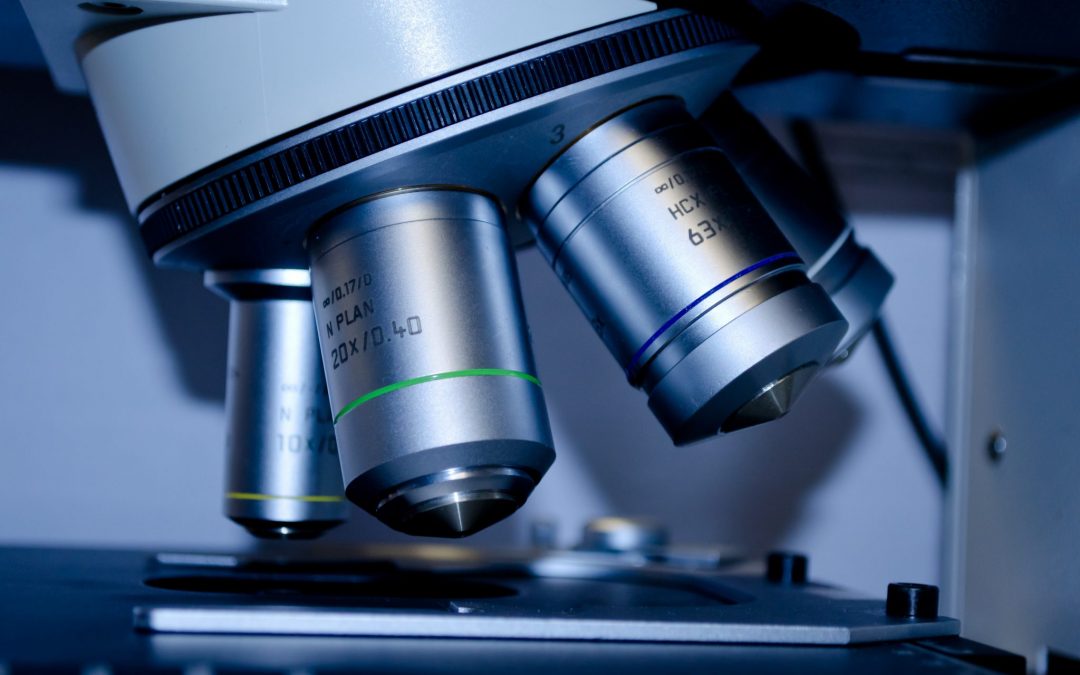Have you ever looked under a microscope and been amazed by the intricate artwork that you would never have seen without one? I know I have. Microscopes, however, are not just tools to amaze students and get them excited about science class. Microscopes have been and continue to be tremendous boons to scientific discovery and the lives we are now able to live. Without microscopes we would not have the modern medicines we have today, we would not understand why food goes bad or why sometimes we get sick when we drink water. It’s because I want to advance scientific discovery that I chose to work on a relatively new type of microscope for my Honors Scholarship Project.
Light microscopes were the first type invented. Using a lens or series of lenses, light can be refracted to magnify the image you see, in the same way that your own eye bends light. Many scientific advances have come from using such microscopes; however, after some time, scientists wanted to track specific structures in cells and samples. To do this they turned to fluorescence microscopy. In this process, a dye is added to a sample that attaches to a material of interest. On the dye is a molecule that glows (or fluoresces) when it is exposed to light. This molecule is called a fluorophore. What my project seeks to accomplish is to cause any material to fluoresce without the need to attach a fluorophore to it. This not only allows us to see different structures without labelling them beforehand but also gives us insight into the chemical makeup of our samples.
When my Junior year began, I decided to get a head start on my project. I wanted to have a quality project that I didn’t have to stress about my senior year. So that Fall I began to build a robot. Wait, a robot, I thought you were building a microscope? Well, yes, but the microscope runs on a programming system used by engineers and scientists called “LabVIEW.” It’s a graphical programming system that offers built in modules for many of the procedures, connections, and algorithms used by scientists and engineers. Because the microscope was programmed using this software, in order to learn how to use it, I decided to make a robotic car that would be programmed using this software. I ended up making one and it’s still in the Physics basement to this day.
After the robot was done, by the end of Winter Quarter of my Junior year, I began to work on the microscope. First was the theory. A lot of theory. How lasers work, how microscopes and multi-lens systems work, nonlinear optics, fluorescence microscopy, etc. After that I began to work on the microscope itself. Now, Dr. Elvin Geneston (Chair, Department of Physics) had already assembled most of the microscope, so to understand how it worked, naturally, I took it apart and put it back together. I rebuilt the microscope and for the past year Dr. Geneston and I have been adding parts to it and completing it. Theoretically, it was finished half-way through Fall Quarter, and I fully expected to be imagining things and discovering some new mechanism of cancer cells that would lead to a treatment by the end of the year with plenty of time left over to write my thesis paper and prepare my Nobel Prize acceptance speech. The only problem was that the microscope didn’t work! To make a long story short, it has taken the past two quarters to debug, fix, and wait for new parts for the microscope, but finally it is working. The laser still isn’t producing the pulses we need to adequately excite the molecules, but the mirrors scan properly now and there’s very little noise affecting our images. It’s been a long ride, but now I can have fun experimenting and looking at every sample I get my hands on. I guess the only thing left to do now is to write my Nobel Prize acceptance speech!
— Andrew Tolan, Senior

